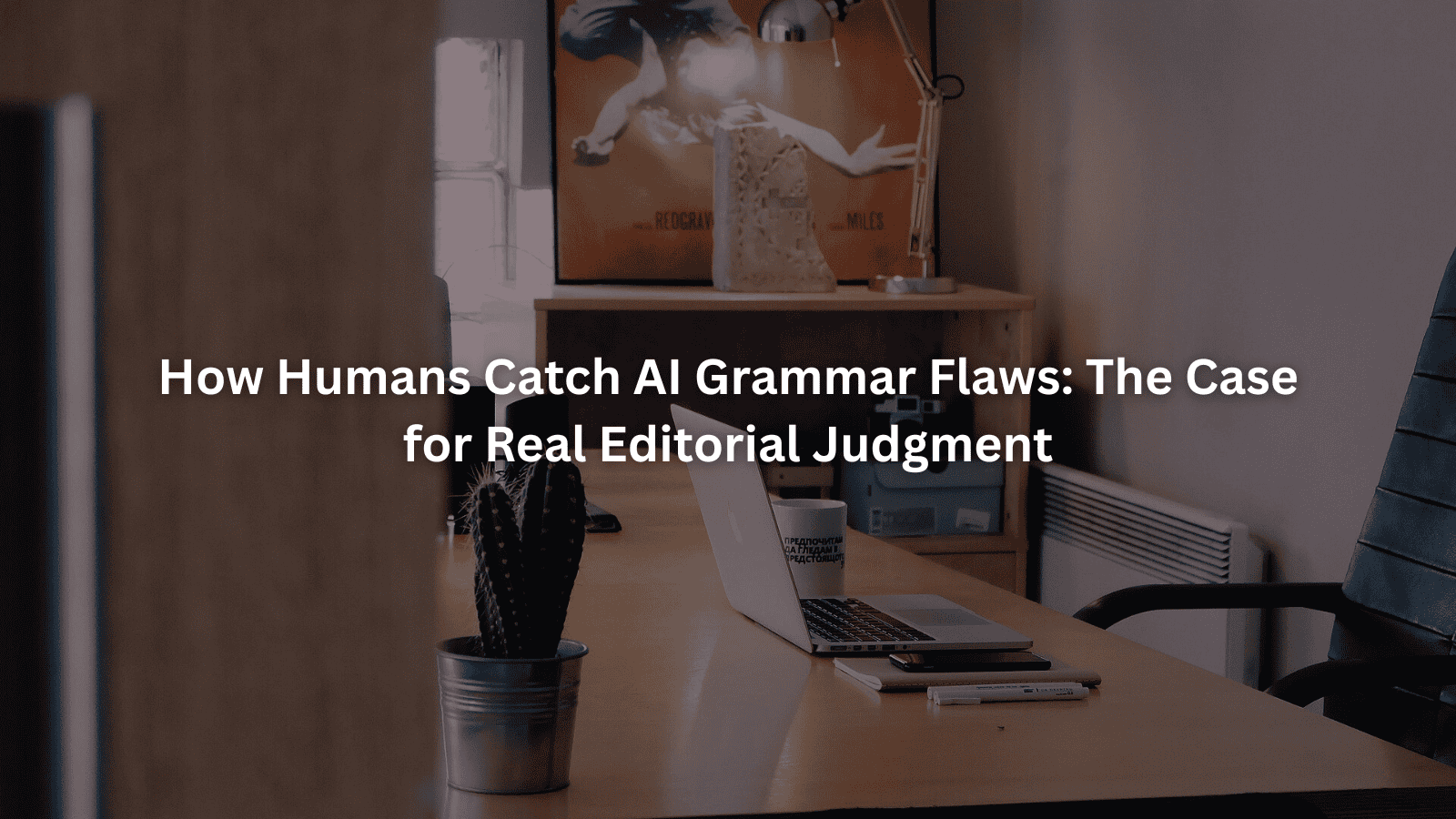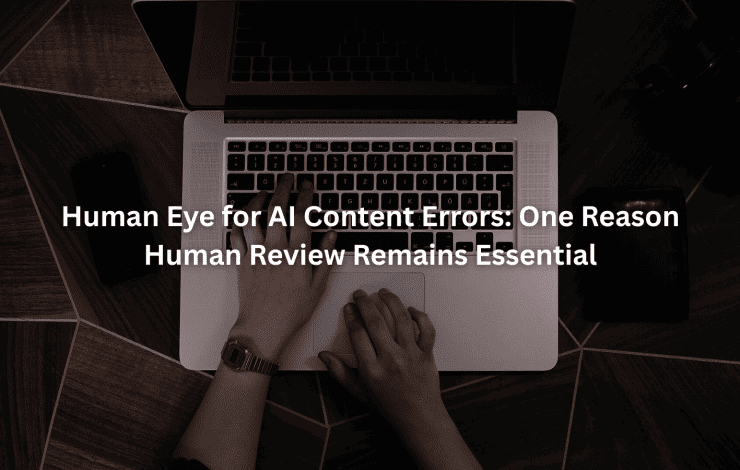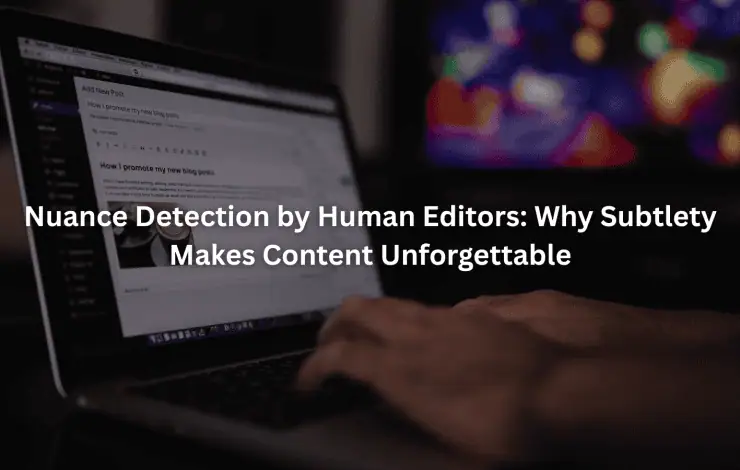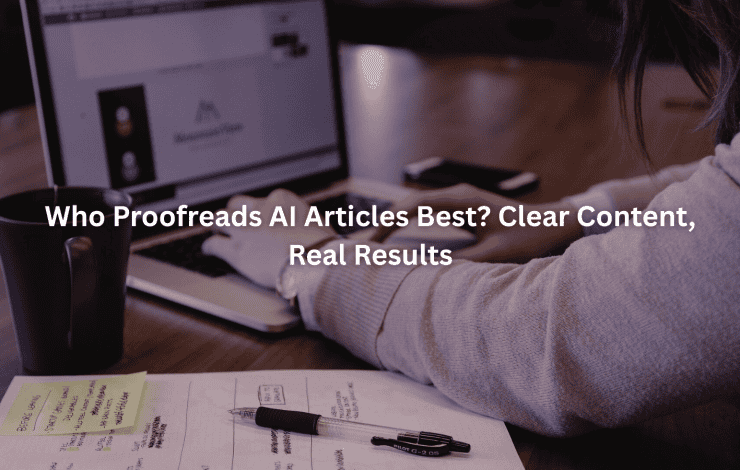Use your ears as much as your eyes when reading AI-generated text. Natural language is full of quirks that algorithms miss, context, tone, and idioms. Human editors spot awkward phrasing or meaning drift instantly. Even with the best software, real people make writing readable.
Key Takeaways
- Humans catch AI grammar flaws by using context, intuition, and lived language experience.
- AI struggles with nuance, idioms, and ambiguous phrasing, areas where human editors excel.
- Combining AI tools with expert human review, like we do at Jet Digital Pro, creates more natural, Google-ready writing.
Understanding AI Grammar Flaws and Human Detection
We see AI grammar checkers everywhere. They flag passive voice, highlight missing commas, and sometimes suggest word swaps. Still, every week, we find awkward sentences or strange word pairings in AI-generated drafts. There’s a reason for this. No matter how slick the interface, software often stumbles over the living, breathing nature of language. [ 1 ]
Still, every week, we find awkward sentences or strange word pairings in AI-generated drafts proof that ensuring clarity with a human editor is always worth it.
Limitations of AI in Grammar Accuracy
AI systems excel at checking basic grammar rules. They can spot missing articles, misused tenses, or subject-verb disagreements. But when it comes to context or nuance, they start to slip. After running hundreds of documents through AI tools, we’ve seen the same types of errors again and again.
Contextual Understanding Challenges
AI doesn’t know your intent. It can’t read between the lines. We’ve seen AI use ‘bank’ for both rivers and finances, without realizing which one fits the scene. Human editors catch these because we consider the story’s bigger picture. Context matters.
Ambiguity and Nuance Handling Issues
Ambiguity trips up AI. We’ve seen sentences like “He said she would leave her job” left unchanged, even though it’s unclear who’s quitting. Humans pause and ask, “Wait, whose job?” That pause is the difference.
Difficulty with Idiomatic and Cultural Language
Idioms and slang get mangled the most. AI says, “kick the can down the road” and means it literally. Or it translates idioms word-for-word, missing the meaning. Our team knows when an expression feels off. We replace it with something that fits the language and the reader.
Common Types of AI Grammar Errors
You can spot AI-generated text by looking for certain patterns. Over time, these mistakes start to stand out, at least, to those of us who edit regularly.
Unnatural Word Pairings and Collocations
AI often puts together odd word pairs. We’ve seen “make a big success” instead of “achieve great success.” The words technically work, but no one says it that way. These awkward collocations are dead giveaways.
Sentence Structure and Flow Problems
Sometimes you get sentences that ramble. Or ones that repeat the same structure over and over. AI tends to produce run-on sentences or choppy statements, and the flow gets lost.
Verb Tense and Agreement Mistakes
In complex sentences, AI often slips up. You’ll see “She go to the store yesterday,” or “The data shows…” when it should be “show.” Human editors fix these almost on instinct.
Punctuation and Modifier Misuse
Missing commas, extra semicolons, or misplaced modifiers, AI tools get these wrong more often than you’d think. We’ve had to rescue many sentences from the clutches of dangling modifiers.
Homonym Confusion and Word Choice Errors
AI can’t always pick the right word when two sound alike. “Their” for “they’re,” “effect” for “affect.” We spot these, often because we know the writer’s intended meaning.
Human Strategies for Identifying AI Grammar Flaws

Editing is more than just following grammar rules. It’s about reading with your ears and your eyes, trusting your gut, and questioning what doesn’t “sound right.” Here’s how we, as editors, catch what AI misses.
Intuitive Grammatical Sense and Language Intuition
Most of us can tell when a sentence feels wrong, even if we can’t explain why. That’s years of reading, listening, and speaking at work. We know the rhythm and pattern of natural speech. This intuition can’t be coded.
Contextual Interpretation and Meaning Clarification
Humans read for meaning, not just structure. We spot when a phrase is ambiguous or when a sentence could be misread. For example, if a sentence says, “She gave her dog food,” we clarify if it was food for the dog or food handed to her by the dog (unlikely, but you get the point).
Detecting Fluidity and Natural Style
AI-created text often sounds stilted. We pick up on repetitive patterns, awkward transitions, or overformal language. Then we smooth it out, aiming for clarity and flow.
Attention to Subtle and Context-Driven Grammar Rules
There are endless exceptions in English. AI overlooks regional differences or evolving usage. We catch things like “different to” versus “different from” or when sentence fragments add style instead of confusion.
Human Editorial Judgment and Correction Techniques
Good editing depends on more than grammar. We factor in tone, audience, and purpose each time we review a draft.
Tone, Register, and Audience Adaptation
An academic paper isn’t a blog post, and a sales email isn’t a novel. We adjust grammar and style to suit the audience. AI tends to write in one gear, neutral, sometimes robotic. We switch gears as needed.
Reference to Real-World Usage and Style Guides
We rely on style guides, but we also lean on our experience. If a phrase sounds odd, we check how it’s used in reputable sources. Google’s “site:.gov” or “site:.edu” searches help us see what’s standard.
Domain-Specific Language Considerations
Technical writing has its own grammar quirks. Same with legal or creative writing. We adapt our editing for each field, using industry terms correctly and making sure the grammar fits the context.
Practical Correction Examples and Approaches
Here are a few corrections we’ve made:
- AI: “She made a large success.”
Human: “She achieved great success.” - AI: “Most better solution is available.”
Human: “The best solution is available.” - AI: “Their going to the park.”
Human: “They’re going to the park.”
These aren’t just technical fixes, they’re the mark of a human editor’s judgment.
Enhancing Grammar Accuracy Beyond AI Capabilities
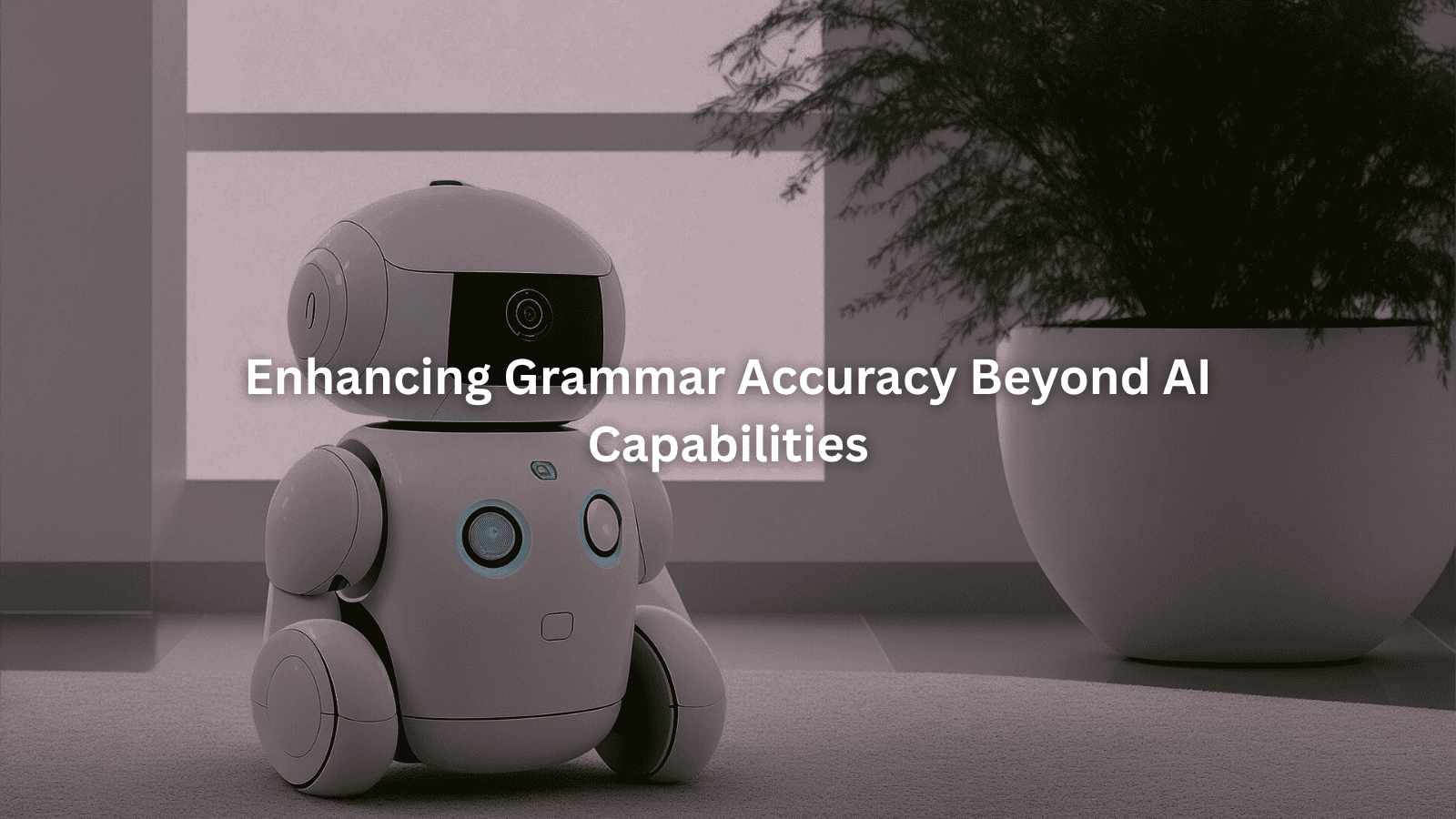
We don’t just spot errors. We refine the entire piece, making sure the meaning shines through and the style matches the goal.
Leveraging Linguistic Expertise and Cognitive Processing
We rely on our knowledge, but also on our experience with language in the real world. Our editorial team at Jet Digital Pro combines cognitive processing with deep linguistic expertise.
Semantic Accuracy and Meaning Preservation
We always ask: Does this sentence say what the writer means? We catch when the meaning drifts or when a word choice changes the message. That’s something AI rarely gets right.
Stylistic Coherence and Readability Improvement
A good piece feels smooth. We ensure transitions make sense, sentences vary in length, and nothing feels out of place. If a passage feels clunky, we rewrite until it feels natural.
Nuanced Correction of Ambiguous Phrasing
Ambiguity isn’t always bad, but when it’s unintentional, it confuses readers. We clarify, rephrase, or add context. For example, we change “He saw her duck” to “He saw her pet duck” or “He saw her duck under the table.”
Syntactic Consistency and Structural Refinement
We check that lists match, pronouns are clear, and modifiers aren’t floating. Consistency in structure builds reader trust and comprehension.
Integrating Proofreading and Editing Skills
Editing is more than grammar. Proofreading is the final polish that makes content shine.
Error Spotting Techniques and Redundancy Removal
We scan for repeated words, unnecessary phrases, and double negatives. Cutting the clutter makes writing stronger.
Modifier Placement and Sentence Flow Optimization
Misplaced modifiers can ruin a sentence. We move phrases so meaning is clear: “Running down the street, the car hit John” becomes “The car hit John as he ran down the street.”
Parallel Structure and Pronoun Consistency
Lists and series need balance. We fix “She likes reading, to swim, and bikes” to “She likes reading, swimming, and biking.” Pronouns should always match their subjects.
Usage Correction and Clarity Verification
Are You a Digital Agency?
White Label SEO Content Services for Agencies
Scalable, customizable, and results-driven content solutions for your clients.
We double-check tricky words like “affect” and “effect,” and make sure every sentence says what it should. If we’re unsure, we ask a colleague for a second look.
Improving Content Quality with Human Oversight
Our strongest work happens when we blend tools and intuition. At Jet Digital Pro, we use AI as a first pass, but rely on our editors to perfect the draft.
Fluency Checks and Natural Phrasing
We read aloud. If something catches, we fix it. Our ears often catch what our eyes miss.
Tone Adjustment and Communication Effectiveness
We match tone to the brand or audience. A casual blog sounds different from a white paper. We adjust wording and style accordingly.
Collocation Accuracy and Idiomatic Expression Correction
We know when an expression feels forced. If AI writes “take an effort,” we change it to “make an effort.” Idioms need to sound right, not just be correct on paper.
Language Validation and Editorial Judgment
We trust our judgment. If a sentence doesn’t feel right, we change it. If we’re not sure, we research or ask another editor. Collaboration is key.
Tools and Practices Supporting Human Review

We’re not anti-AI. In fact, Jet Digital Pro combines the best of both worlds, AI for speed, humans for quality. We run drafts through advanced grammar editing with a human-AI editor, then review the suggestions.
Combining Natural Language Processing with Human Insight
We run drafts through grammar checkers, then review the suggestions. Some fixes are spot on, others miss the mark. Our editors decide which changes to keep. [ 2 ] At Jet Digital Pro, we use human-AI editing for grammar and proofreading as a first pass, but rely on our editors to perfect the draft.
Utilizing Style Guides and Corpora for Reference
We keep the AP Stylebook and Chicago Manual nearby. For tricky cases, we search large text databases to see how phrases appear in real writing.
Cognitive Language Processing in Editorial Decisions
Our brains process language differently from machines. We spot patterns, remember exceptions, and recognize when a sentence “just works.” That’s where we outperform AI.
Techniques for Meaningful Text Refinement
Need a Strategic SEO Content Partner?
Let’s craft SEO content that ranks, converts, and grows your brand.
Talk to UsWe rephrase, cut, and rearrange until the writing feels seamless. Our goal isn’t just to fix errors, but to make content engaging and clear.
If you want writing that feels human, and passes both Google and reader scrutiny, combine smart tools with skilled editors. That’s what we do at Jet Digital Pro. We’ve learned that algorithms can help, but real people make the difference. Your content deserves both.
FAQ
How do human editors notice awkward phrasing that AI often misses?
Human editors rely on years of reading, writing, and listening to real conversations. We recognize when a sentence doesn’t match how people actually talk or write. Sometimes, AI-generated text sounds stiff or oddly formal, even if every word is technically correct. Our ears catch these oddities, and we adjust the language to feel more comfortable and natural for readers.
Why are idioms and cultural references so tricky for AI grammar checkers?
Idioms and cultural references have meaning that isn’t obvious from the words themselves. AI might translate or use them literally, which can make the sentence confusing or even silly. We know when a phrase like “spill the beans” fits, and when it doesn’t. Human editors also notice when a reference wouldn’t make sense to the intended audience, so we swap it for something better.
In what ways do humans use context clues that AI might overlook?
Humans pick up on context by looking at the topic, previous sentences, and even the writer’s intention. For example, if a sentence could be read two ways, we ask ourselves what makes sense in the situation. AI might not notice when a pronoun like “it” could refer to more than one thing, but we do. That helps us rewrite for clarity and meaning.
How do human editors handle word choice errors that AI tools miss?
AI sometimes chooses words that are close in meaning but not quite right, especially with homonyms or commonly confused words. We pay attention to the message and the tone, so we can spot when “affect” is used instead of “effect” or when “compliment” should have been “complement.” Our experience with real language use helps us make the right call every time.
What role does audience awareness play in catching grammar flaws?
Knowing who will read the content changes how we edit. We can tell when a sentence is too formal for a blog or too casual for a report. Sometimes, AI sticks with a neutral style, but readers need language that feels right for their background or expectations. We adjust grammar, tone, and word choice so the writing connects with the people who matter most.
Conclusion
We know no AI tool, no matter how advanced, can replace the sharp eyes and instincts of a human editor. At Jet Digital Pro, we blend AI efficiency with real editorial expertise to deliver content that feels natural and builds trust. Our 11-step editing process ensures every sentence connects with your audience and stays Google-friendly. For digital agencies ready to scale SEO content without extra workload, let’s talk. Contact us today
References
- https://www.researchgate.net/post/The_Role_of_Artificial_Intelligence_in_Writing_Research_Papers
- https://www.sciencedirect.com/science/article/pii/S2589004224021035
Related Articles
- https://jetdigitalpro.com/human-ai-editor-for-proofreading-grammar/
- https://jetdigitalpro.com/advanced-grammar-by-human-ai-editor/
- https://jetdigitalpro.com/ensuring-clarity-with-a-human-editor/
P.S – Whenever you’re ready,
we’re here to help elevate your SEO content.
Partner with us for strategic, scalable content that drives real organic growth.
Contact Us Now
